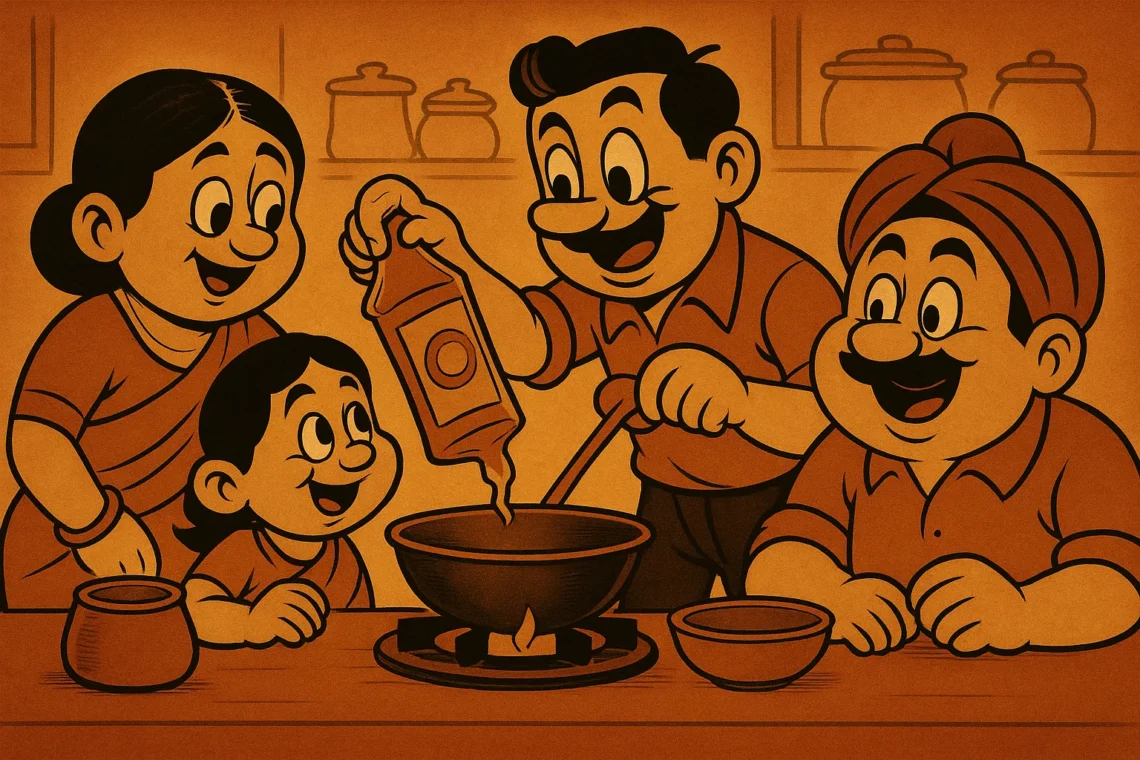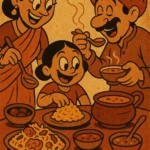When you think of Indian food, the mind immediately jumps to spices—the fragrant, colorful, and often fiery seasonings that form the heart of every dish. But there’s another key ingredient that quietly runs through the veins of Indian cuisine, shaping its flavors and regional identities long before the spices make their entrance. That ingredient is oil.
We’ve all heard of the magical *tadka*, the sizzling tempering that sends spices dancing in hot oil, filling the kitchen with a rich, inviting aroma. But oil, as an ingredient, is much more than a carrier for flavor; it’s the foundation of many dishes, an unsung hero that influences texture, aroma, and, yes, even the very essence of a meal. And just as spices are regional, so too is oil—a fact that often goes unnoticed in the rush to identify the more obvious ingredients.
Mustard Oil: The Bold Heart of the North
If you’ve ever tasted food from the north of India, you’ll know that the unmistakable pungency of mustard oil is a signature flavor. Mustard oil is bold, assertive, and unapologetic. It has a bite to it that cuts through rich gravies and complements the deep, earthy flavors of legumes and meats. In the kitchens of Punjab, Haryana, and Uttar Pradesh, mustard oil is often the first oil to hit the pan, giving dishes like *sarson da saag* and *aloo gobi* their distinctive taste. It’s also a carrier for all the aromatic tempering—the *tadka*—that elevates the dishes to new heights. In a way, mustard oil is the backbone of these northern flavors, a flavor-packed oil that adds depth and dimension to the food.
The oil’s pungency is often tempered by heating it to its smoking point before use, a process known as *”smoking the oil”*. This unlocks its full potential, softening the sharpness while allowing its inherent richness to meld with the dish. Mustard oil is not just for cooking; it’s often used as a finishing touch, drizzled on top of cooked dishes to enhance the flavor profile. A drizzle of hot mustard oil on a bowl of *dal* or mixed into the *raita* transforms an everyday meal into an experience.
Coconut Oil: The Soul of the South
Traveling to the south of India, the food feels lighter but equally vibrant, with coconut oil dominating the cooking process. It’s no surprise that coconut oil plays such a central role in the cuisine of Kerala, Tamil Nadu, and Karnataka, where coconuts are a part of daily life. The tropical climate, the bounty of coconut palms, and the local agriculture have given rise to an oil that’s rich, aromatic, and subtly sweet. Its flavor, unlike mustard oil, is soft but distinct, and it pairs beautifully with the delicate spices of the region.
Coconut oil lends a mild nuttiness to dishes and is an integral part of *sambar*, *avial*, and the famous *Kerala-style fish curry*. When you sauté the vegetables and spices in coconut oil, there’s a distinct sweetness that comes through, balancing the tangy and spicy elements of the dish. The texture, too, is different—rich but not heavy, providing a natural, smooth base for curries and stews. Coconut oil is not just an ingredient; it’s a vehicle for preserving the traditional taste of southern India. It evokes memories of lush landscapes, the salty air by the coast, and the simplicity of food made with love.
Groundnut Oil: The Middle Path
Moving to the heart of India, groundnut oil (or peanut oil) takes center stage in a variety of dishes. Unlike mustard or coconut oils, groundnut oil offers a more neutral profile, allowing the other ingredients in the dish to shine while still contributing a subtle richness. It is widely used in Maharashtra, Gujarat, Madhya Pradesh, and parts of Rajasthan. It’s the oil of choice for tempering spices in popular dishes like *sabzi* or *kadhi*—where the flavor comes not from the oil itself, but from the combination of spices cooked within it.
Groundnut oil is versatile. It doesn’t overpower the food, but it enhances it in its own quiet way. It’s perfect for the stir-fry-style cooking typical in many parts of India, where the oil’s high smoking point allows for quick, high-heat cooking. You’ll find it in everything from a simple *aloo ki sabzi* to the crispy layers of a *pav bhaji* base. Groundnut oil’s adaptability makes it a staple in the Indian kitchen—it doesn’t have the punch of mustard oil, nor the tropical richness of coconut oil, but it strikes a balance that complements almost anything.
The Ritual of Oil in Cooking
The type of oil used in a dish is not only a question of flavor, but also one of tradition and ritual. In India, cooking is often a communal activity. The oil is not just an ingredient; it is part of a ritualistic process that links us to our past, our culture, and our identity. Whether it’s the fragrant, spiced oil in a *biryani* or the coconut oil in a simple vegetable curry, the choice of oil signifies a connection to the land, to the people, and to generations of culinary knowledge passed down through the ages.
The act of adding oil to the pan isn’t just the first step in a recipe; it’s a metaphor for the beginning of a journey. When oil hits the hot pan, it releases its aroma, signals the start of the meal, and sets the tone for what’s to come. It’s a moment of anticipation, a promise that something delicious is on its way.
The Legacy of Oil in Indian Cuisine
Each region of India has its own relationship with oil, and the use of oil in cooking is deeply tied to regional agriculture, climate, and the availability of natural resources. From the mustard oil of the north to the coconut oil of the south, and the groundnut oil of the central plains, oil is not just a medium for cooking—it’s an expression of place, culture, and history.
So the next time you drizzle some oil into your pan, think about the flavor and tradition it brings. Think about the farmers who harvested the mustard seeds, the coconuts, or the peanuts. Think about the centuries of culinary evolution that have brought these oils into your kitchen. And remember, in Indian cuisine, oil isn’t just a fat—it’s the foundation of every dish, the unspoken hero of every meal.
Born in Mumbai, now stir-frying feelings in Texas. Writes about food, memory, and the messy magic in between — mostly to stay hungry, sometimes just to stay sane.












